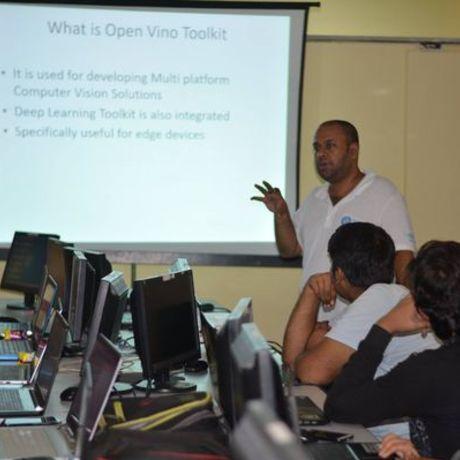
- Projects 51
- Followers 452
Abhishek Nandy
Kolkata, WB
This idea describes an approach to detecting mental stress using unobtrusive wearable sensors. The approach relies on estimating the state of the autonomic nervous system from an analysis of heart rate variability. Namely, we use a non-linear system identification technique known as principal dynamic modes (PDM) to predict the activation level of the two autonomic branches: sympathetic (i.e. stress-inducing) and parasympathetic (i.e. relaxation- related). We validate the method on a discrimination problem with two psychophysiological conditions, one associated with mental tasks and one induced by relaxation exercises. Our results indicate that PDM features are more stable and less subject-dependent than spectral features, though the latter provide higher classification performance within subjects. When PDM and spectral features are combined, our system discriminates stressful events with a success rate of 83% within subjects (69% between subjects). ...learn more
Project status: Concept
Mobile, Internet of Things, Artificial Intelligence
Intel Technologies
Other
Idea:
Human stress is a physiological tension that appears when a person responds to mental, emotional, or physical challenges. Unfortunately, in modern life, work stress, family and society problem, financial and economic issues, and other external sources, put everyone in the stress situations. Recent studies have shown continuous contact with a stress situation increases the probability of cardiovascular diseases, HIV, cancer, depression and other mental illnesses. Therefore, identifying the human stress and providing techniques for managing it becomes a critical issue nowadays. Recognising stress situations by a human is along a delay after the diseases effects and problems represent themselves. Thus, many objective methods for stress detection are widespread. Questionnaire and meetings with psychologists are some of the common methods that are time-consuming and costly and may not be accessible at all times. Also, filling questionnaires needs a good memory and remembering events well and is dependent on the ability of patient that describe his/her mood. In some cases, the patient does not know about his/her stress or cause of it. On the other hand, automatic stress detection through physiological signals can be a useful tool to solve this problem and make many researchers interested in working in this field. Stress could be detected by monitoring many physiological changes, such as blood volume pressure (BVP), heart rate (HR) that could be obtained through Electrocardiogram (ECG) and Photo-Plethysmograph (PPG), pupil diameter (PD) etc.
The app will allow easy and quick detection of stress level without much of user learning and hassle.
What it does:
Users can use the mobile app to calculate their stress level which will be categorised. The app can be used in day to day activities example - while giving an interview or detecting stress levels before exams.
How it does:
This procedure consists of five stages as follows:
Making database: database is needed for the training and testing the algorithm.
Feature extraction: extracting features from signals.
Feature selection: selecting subsets of features that are useful to build a proper predictor.
Feature combination: combining selected features based on a model or equation.
Display: a perfect and user-friendly exhibition of the stress level for the test database.
Intel® Distribution for Python